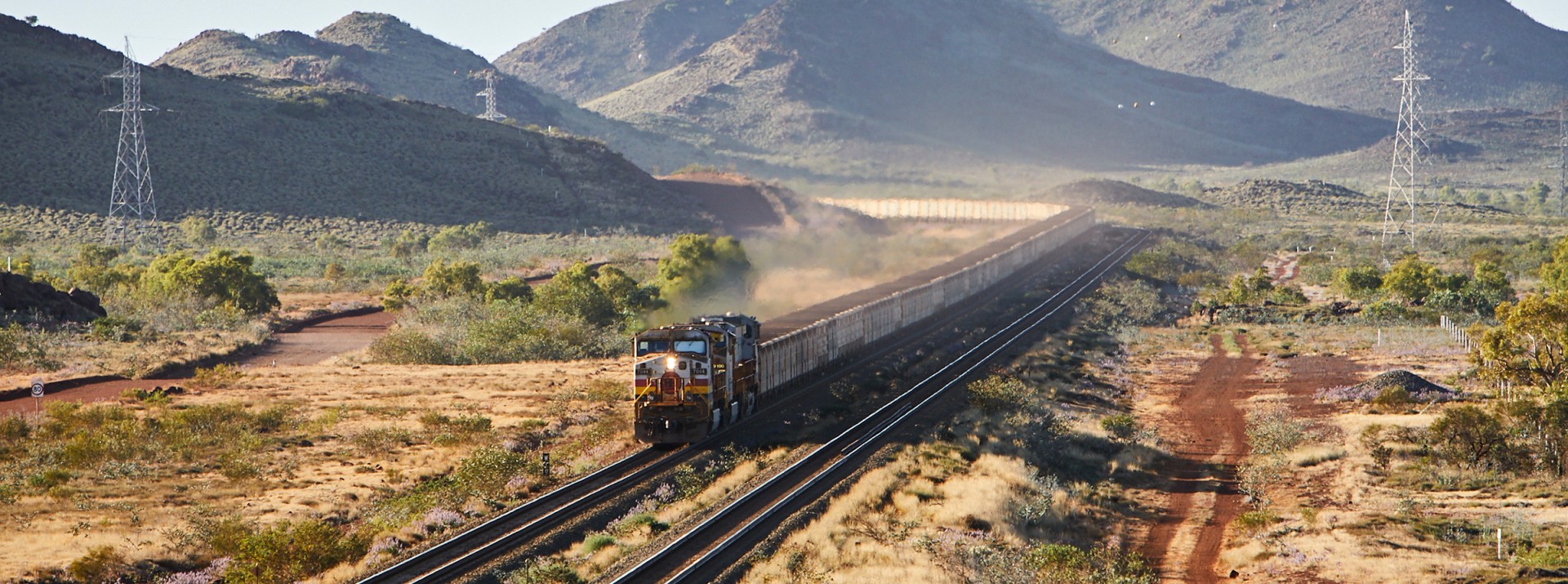
Copyright © 2022 Rio Tinto
In Western Australia, heavy-haul freight trains several kilometers in length carry thousands of tons of iron ore through the outback – without a driver on board. The advanced technology that makes this possible comes from US-based Knorr-Bremse company New York Air Brake (NYAB).
The trains are 2.4 kilometers in length from nose to tail and consist of three heavy-duty locomotives together with 240 freight cars, transporting an amazing 30,000 tons of iron ore from mines in the Pilbara region of Western Australia to ports on the Indian Ocean. Rio Tinto’s automated trains are the world’s heaviest robots – a record confirmed by Guinness World Records Ltd. In place of drivers, the cabins of the trains contain some of the world’s most advanced automation technology.
Rio Tinto’s AutoHaul® system is the world’s first Automatic Train Operation (ATO) application for heavy-haul freight trains. Rio Tinto and system integrator Hitachi Rail began the multi-year collaboration that developed this system in 2006. The AutoHaul® system incorporates numerous sub-systems developed by a large group of companies, including solutions from Knorr-Bremse Group company New York Air Brake (NYAB).
NYAB provides the sub-system responsible for driving the train. Its name? LEADER® Auto Pilot (Locomotive Engineer Assist Display & Event Recorder). LEADER® Auto Pilot utilizes information about the train’s configuration, as well as its route, current speed and position to calculate the most efficient way of driving it at any given moment. “LEADER® carries out tasks usually performed by the locomotive crew,” explains Matthew McDonald, one of the engineers at Knorr-Bremse Australia. “Accelerating, braking, adhering to speed limits, reacting to signals – all of these functions are performed by LEADER®.”
On secondment from NYAB to Knorr-Bremse Australia and attached to a technical team within system integrator and signaling manufacturer Hitachi Rail, McDonald is one of those responsible for ensuring the smooth running of the self-driving freight trains. “The trains are controlled and monitored from a control center in Perth.” The city is some 1,500 kilometers south of Rio Tinto’s rail network. Although the trains are controlled from Perth, NYAB team members travel north when necessary to support on-track testing and deployment of enhancements to the system.
The driverless heavy-haul freight trains now operate on a total of almost 1,900 kilometers of track.
The self-driving trains are well established and have an excellent record of reliability. They first went into service in July 2018, and by the end of the year the autonomous trains had clocked up more than a million kilometers. “Rio Tinto’s autonomous heavy haul trains have now traveled tens of millions of kilometers, and almost all journeys on the network are autonomous”, says McDonald.
There are sound economic reasons to use this technology. Automation of more than 200 locomotives has significantly improved operational efficiency. A typical round-trip journey is around 800 kilometers and requires approximately 40 hours – including loading and unloading. Prior to automation, Rio Tinto had to transfer its locomotive crews a total of 1.5 million kilometers per year by road to their workplace. That is now a thing of the past – as are stops for crew changes.
Rio Tinto’s recently opened Gudai-Darri Mine is the company’s most technologically advanced mine, and the first that was designed to be driven using automated trains from beginning to end. Gudai-Darri is connected to Rio Tinto’s rail network by a new 166-kilometer rail line – bringing the total extent of automated track operations to almost 1,900 kilometers.